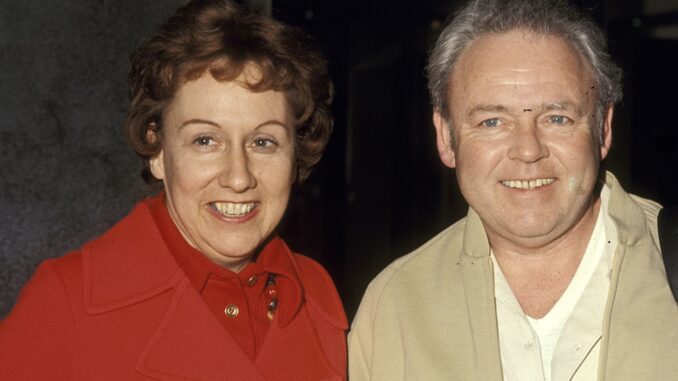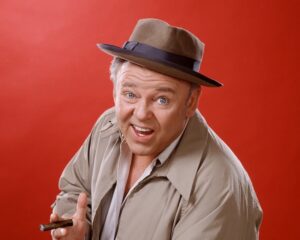
When it comes to groundbreaking television, there are few shows that match the ambition and success of All in the Family. The Norman Lear-createdsitcom tackled nearly every social issue of the time, from racial tensions and antisemitism to queer rights. The Bunker house, led by kindhearted Edith Bunker (Jean Stapleton) and her politically incorrect Archie (Carroll O’Connor), was filled with constant change and a slew of innovative characters (many of whom were spun-off into their own series).
While characters like Maude (Beatrice Arthur) and George Jefferson (Sherman Hemsley) are rightfully remembered for their contributions to the show and their own respective sitcoms, one player who deserves to be spoken about more is that of Beverly LaSalle (Lori Shannon). As one of the first drag queens to appear on American television, she not only shook-up Archie, but became a beloved recurring character. Throughout her run, she slowly helped change Archie’s outlook on the queer community, became close friends with Edith, and was eventually considered an honorary member of the family. Sadly, Beverly’s final appearance ends in a tragedy so great that it causes Edith to rethink her whole faith system. In true All in the Family fashion, the two-part episode is more than just a shocking story, serving as a deeper conversation about sexuality, faith, and hate, themes that are still as important today just as they were back when the show first aired.
Beverly LaSalle Was a Huge Step Forward for Queer Characters

Beverly LaSalle first appeared during All in the Family’s sixth season, titled “Archie the Hero.” One day, Archie comes home a hero after saving the life of a woman who passed out in the cab that he was driving on an overnight shift. He tells Edith and Mike (Rob Reiner) that he saved her life by giving her mouth-to-mouth resuscitation, leaving his address at the hospital so she can settle the cab fare once she’s released. However, when the passenger shows up, it’s Beverly, a drag queen in town for a gig. While Edith is impressed and kind to Beverly, the revelation is a shock to the closed-minded Archie.
Beverly’s appearance was more than just a gag, though: it was glorious progress for queer characters on television. At the time, TV had a very specific way of portraying LGBTQ individuals, particularly drag queens. In fact, SFGATE says that Beverly LaSalle marked “the first time a television series had sympathetically portrayed a drag queen.”As History.com recollects, the art form of drag was illegal in the United States throughout much of the 20th century, even punishable by arrest, and it wasn’t until the Stonewall Riots of 1969 (just eight years before Beverly’s first appearance) that such radical punishment decreased. Still, queer characters were often portrayed negatively on television (if they appeared at all), thanks to the infamous Hays Code. WRAL News states that for decades, “…gay characters on screen were evil, conniving, and ultimately doomed. Even when the code was relaxed in the 1950s, queer characters were still largely tragic figures, often succumbing to suicide or mental illness.”
From the moment she enters the Bunker house, Beverly is warm, fun, and thrilling; her zest and spunk are the perfect foil to the bigoted nature of Archie. While some of the language used to discuss Beverly’s sexuality is outdated, the episode shines, as most of its content is far more advanced than most other shows, both in that era and in more recent shows. The tradition continues on in the Season 7 episode, “Beverly Rides Again,” as she returns one year later to celebrate the anniversary of Archie saving her life, and Edith is thrilled to see her again. With Beverly’s friendship with Edith established and a semi-acceptance is set up with Archie, Beverly becomes a beloved, honorary member of the Bunker family. Sadly, the character’s next appearance would rock the show and the Bunkers, as All in the Family took on one of its darkest social issues ever.
